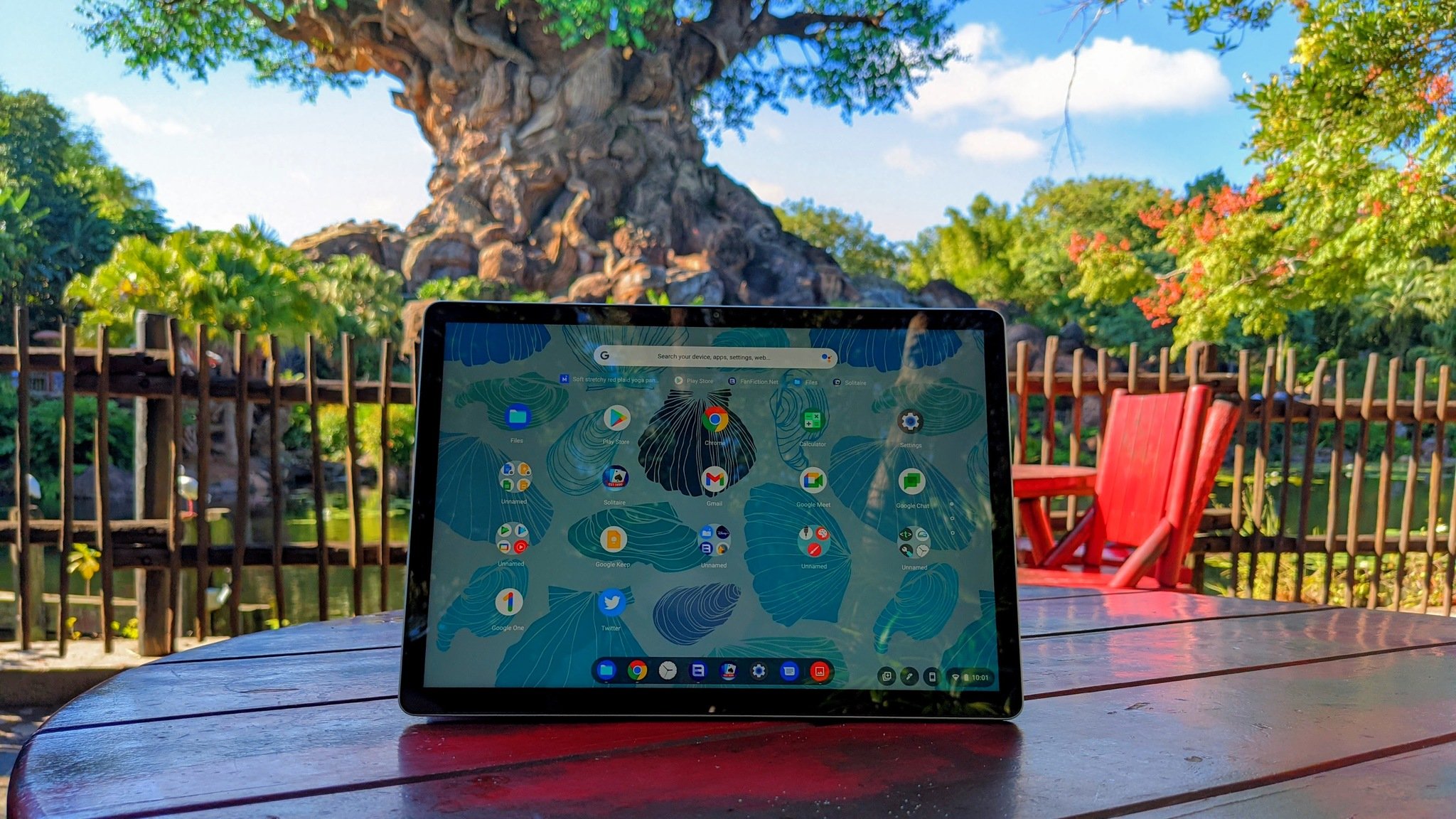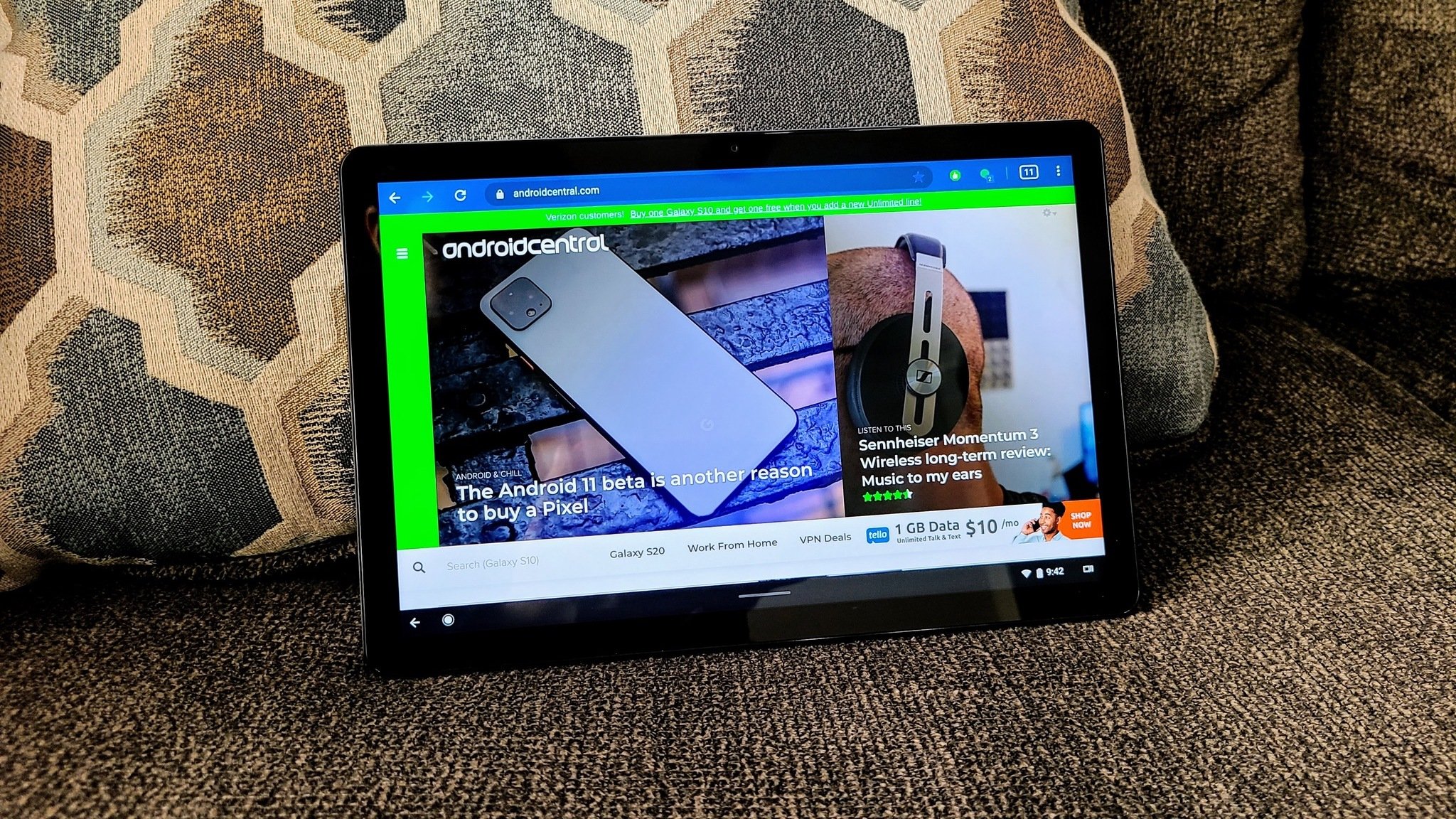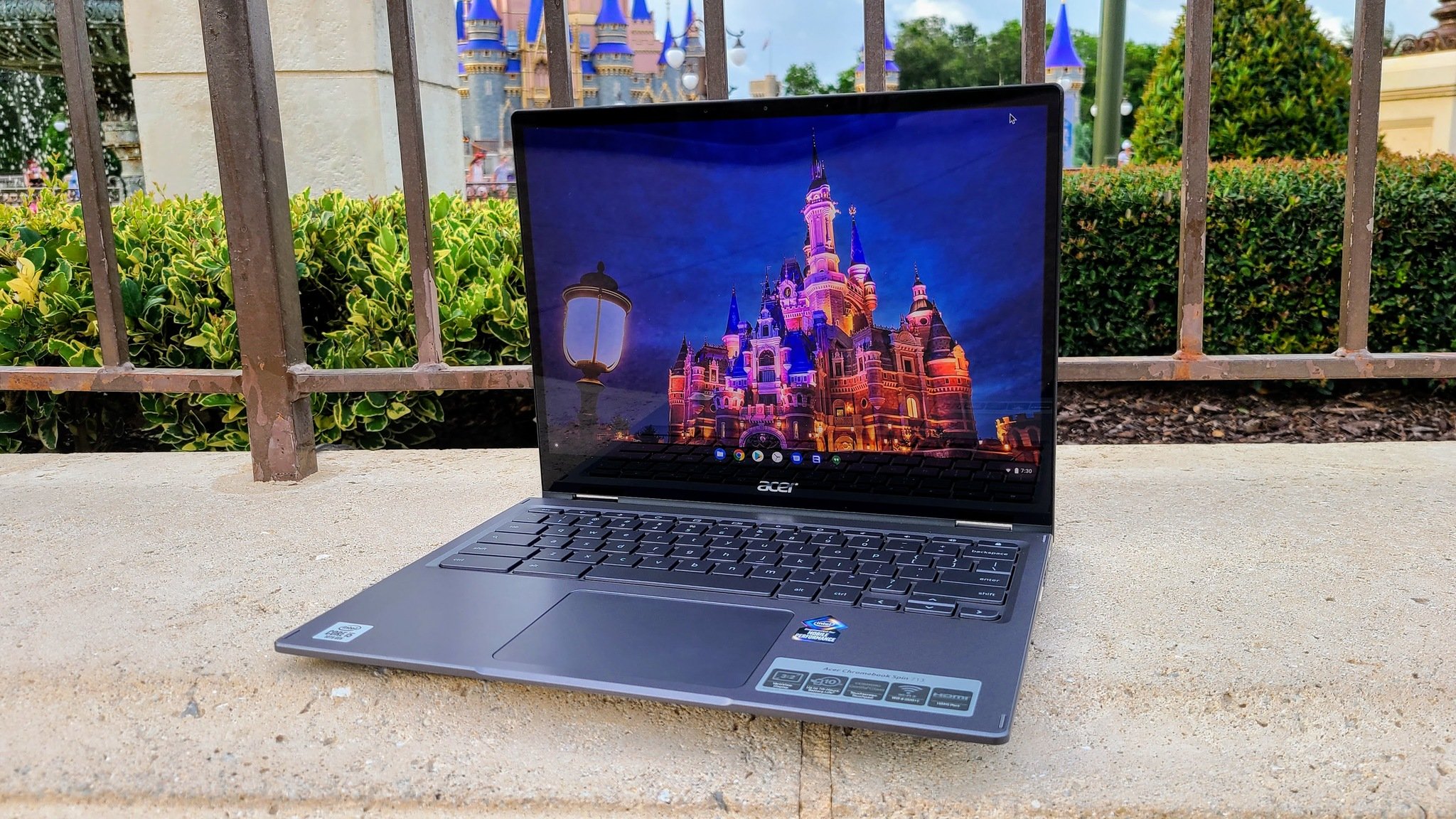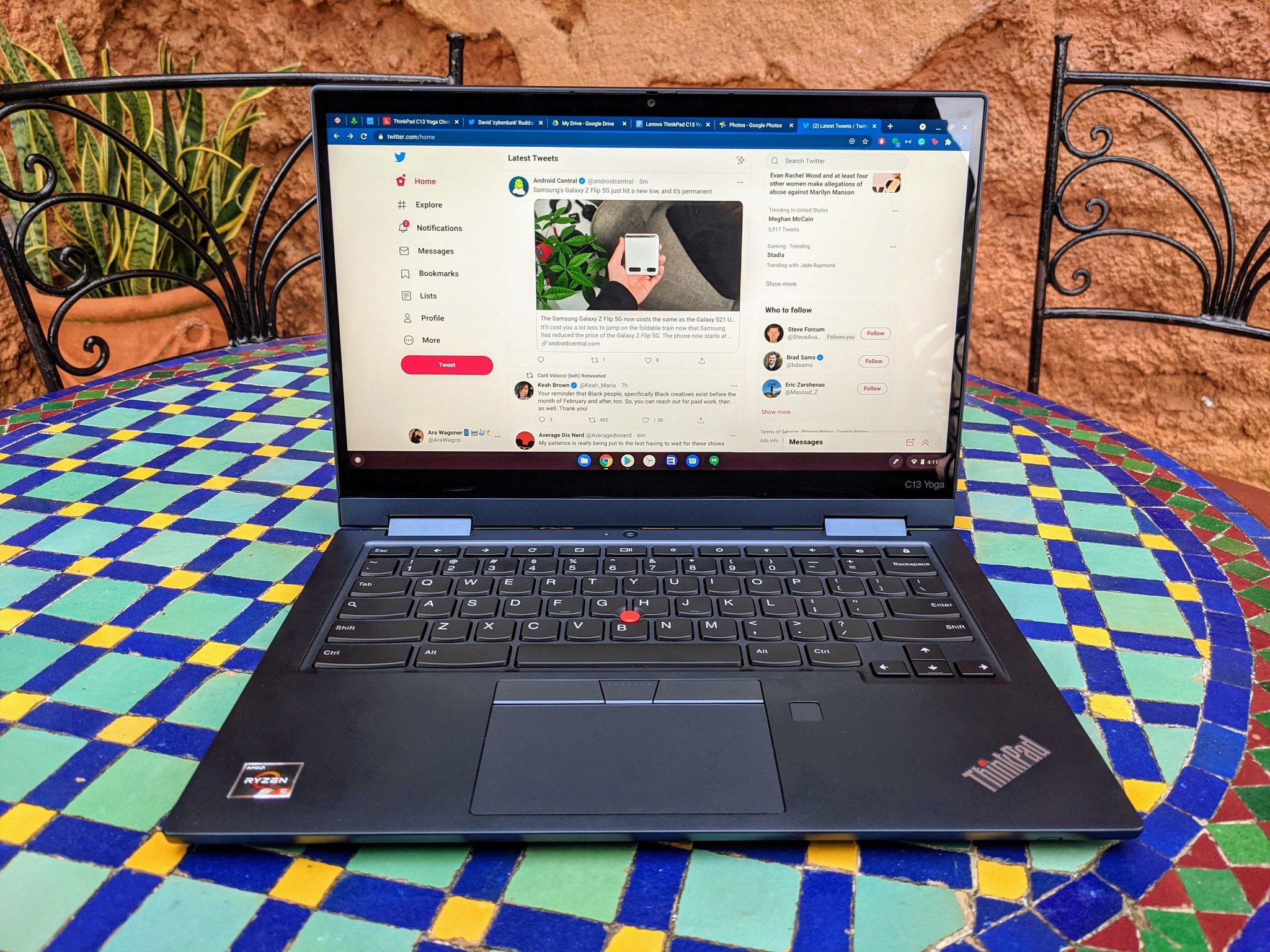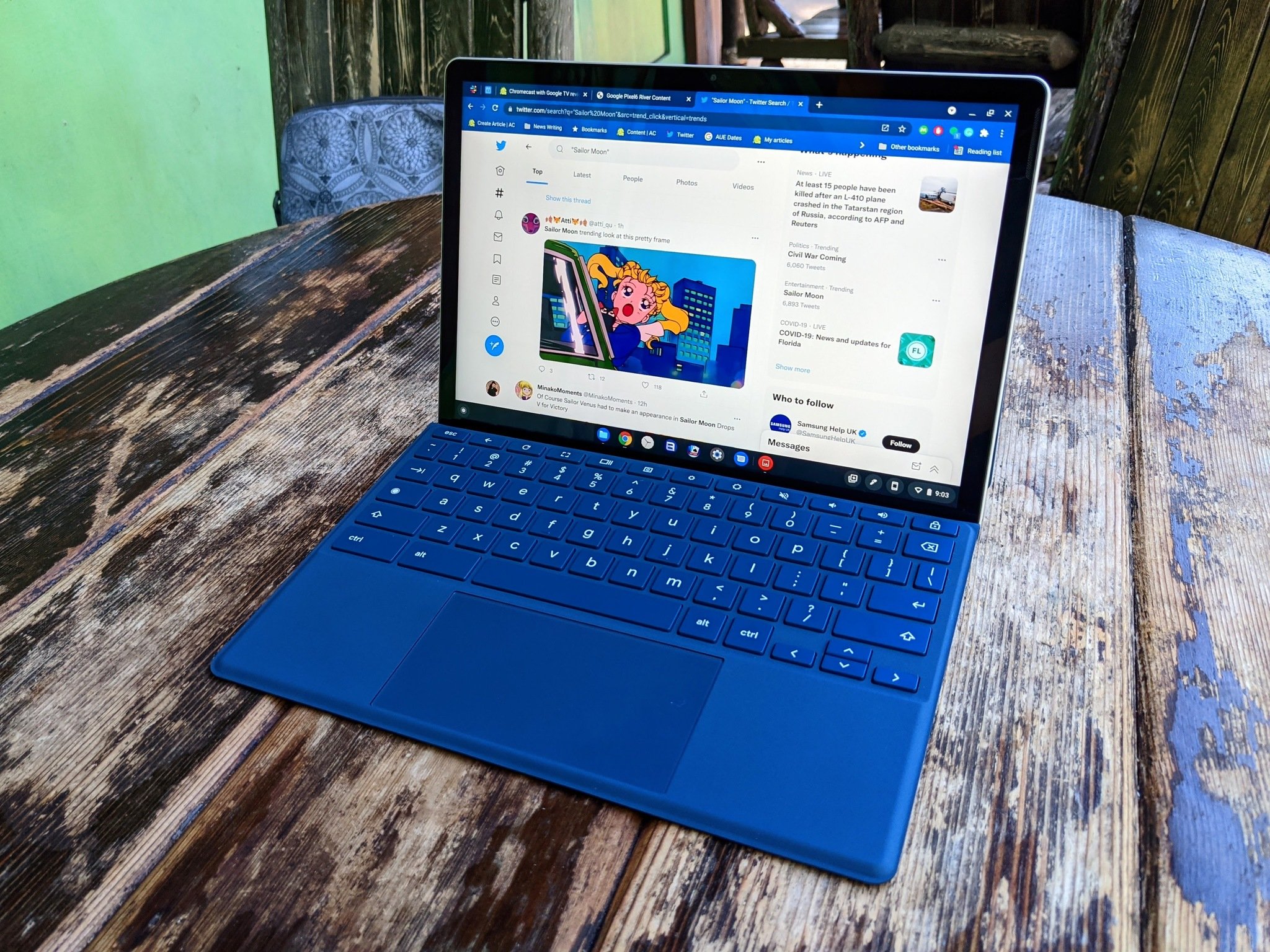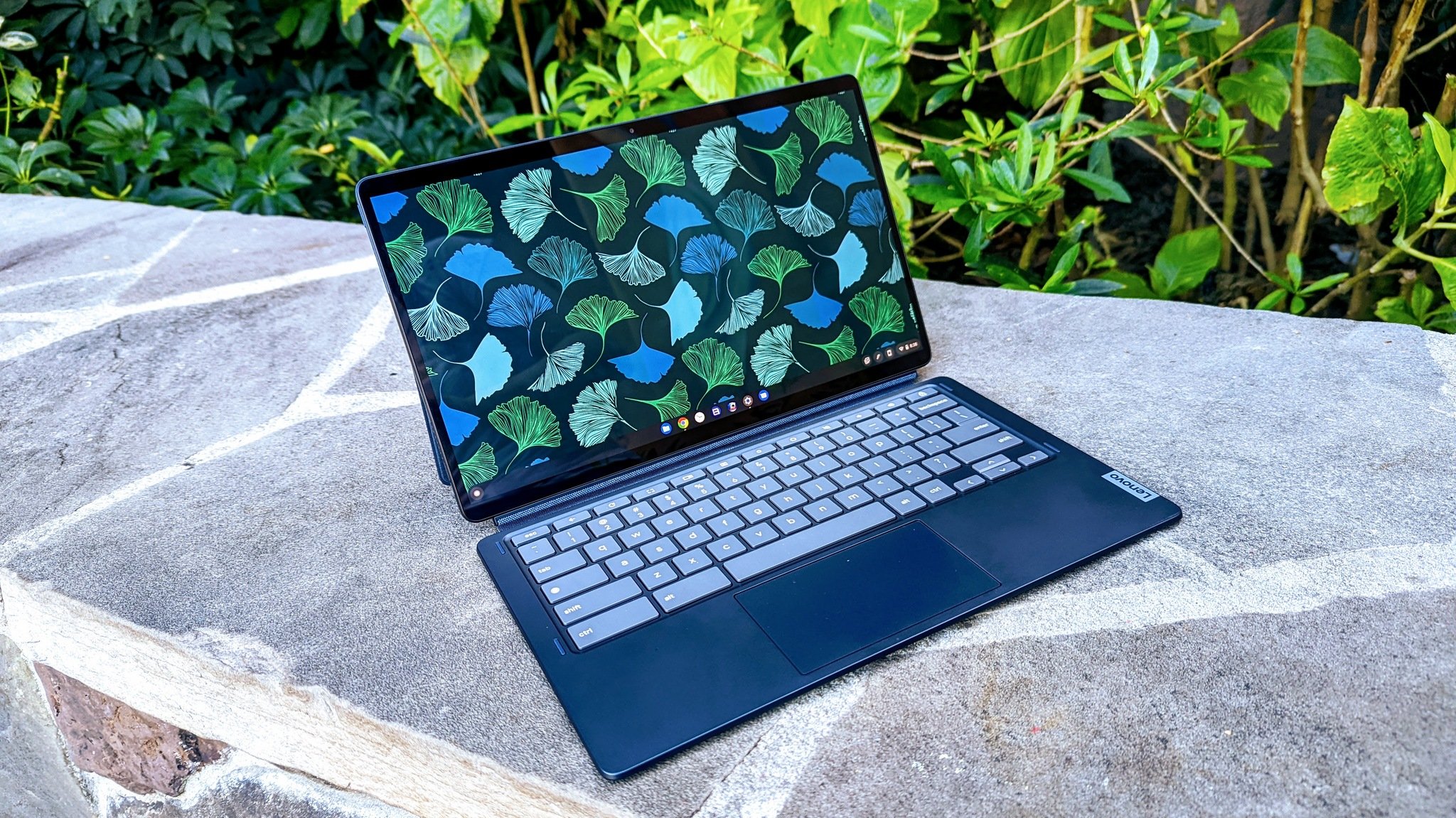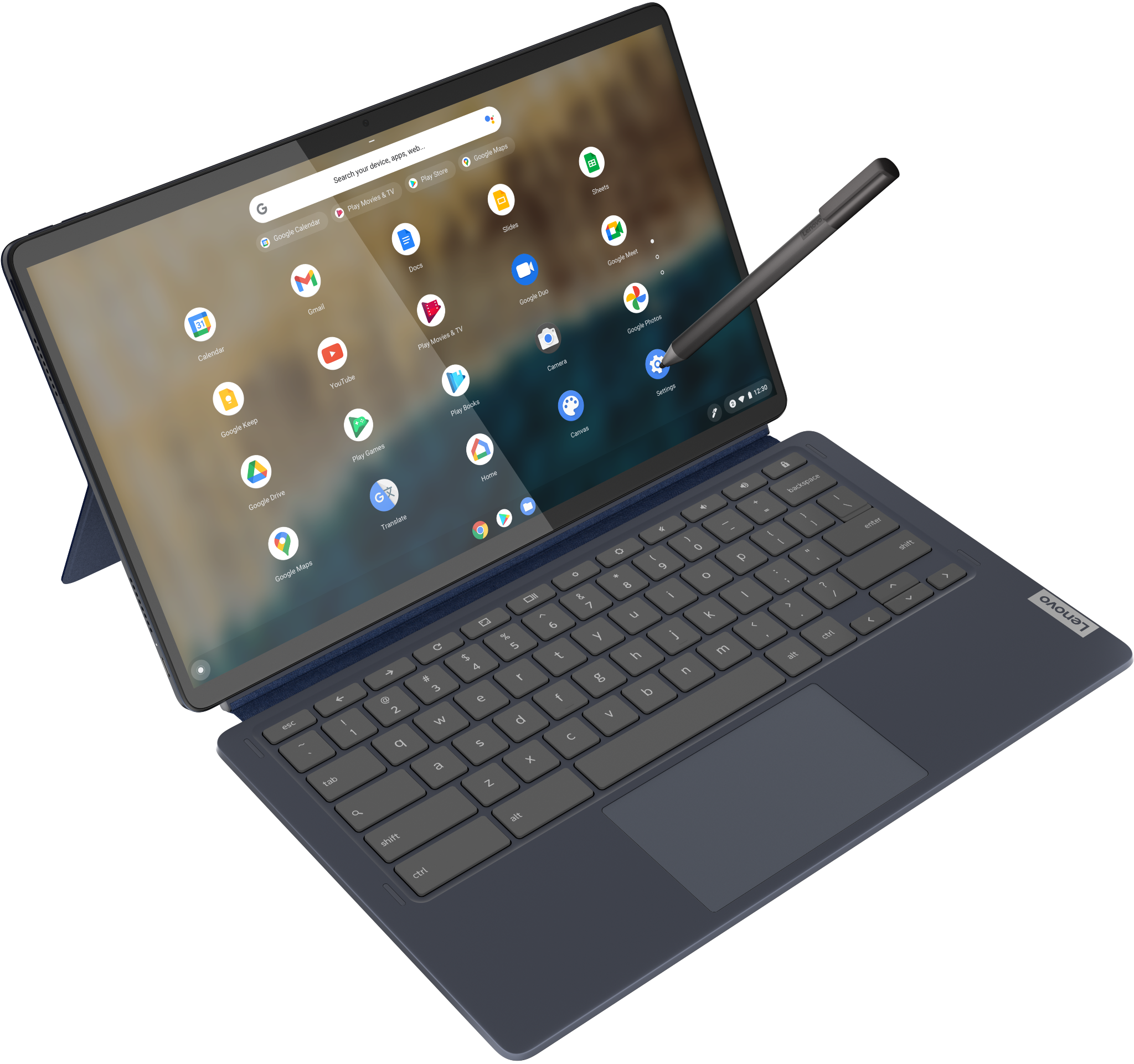Let there be (more) light.
As CES 2022 comes to a close, its tidal wave of announcements has finally ebbed. While not many new Chromebooks were announced, the two that debuted this week deeply excite me for two very, very different reasons. The HP Elite Dragonfly Chromebook will be the first Chromebook with a 1000-nit screen option — and it's anti-glare, too 😎 — but as an Elite-branded Chromebook aimed at Enterprise users, the Dragonfly will be much too expensive for most users to stomach.
Acer, on the other hand, brought a premium screen to a mid-range Chromebook instead. The Acer Chromebook Spin 513 sports the same 13.5-inch touchscreen with a 3:2 aspect ratio, 2K resolution (2256 x 1504), and 400 nits of max brightness as the Acer Chromebook Spin 713, our favorite premium Chromebook. However, instead of a beefy Intel Core i5, there's a more efficient but still competent MediaTek Kompanio 1380 powering things alongside 8GB of RAM, allowing Acer to position it at $600.
$600 is still a bit high for a high-brightness screen, but both entries have solidified the pattern we first started seeing last fall into a real, pleasing trend: Chromebooks are finally getting bright screens!
What is a nit, and why does it matter?
Just as cars are often measured in horsepower, nits are a measurement of candlepower (technically 1 candela per square meter). The average smartphone is usually between 300 and 500 nits of max brightness these days, with phones like the Galaxy S21 Ultra and iPhone 13 Pro Max reaching 1200-1500 nits brightness under certain conditions such as playing HDR content or using the phone outside in full, direct sunlight.
![]() If it looks that way in the shade, imagine how that phone on the left is in direct sunlight.
If it looks that way in the shade, imagine how that phone on the left is in direct sunlight.
Indoor devices only need 200-500 nits, but you need more for outdoor use.
Sunlight is a big part of why nits matter in a device you can use outdoors. The sun's brightness at noon is about 1.6 billion nits — which is why you should never look directly at the sun — and even if only a fraction of that is falling on your phone, it can still wash out most phone displays with ease. 500-nit phones can be difficult to read outdoors without shading the screen, and it's why being able to reach 800-1,200 nits brightness is such a selling point for flagships like the upcoming OnePlus 10 Pro.
It's also part of why the nits brightness on a laptop is so important if you're not treating it like a LIMO (Laptop in Model Only): the moment you go out to the back porch, most Chromebooks with their 220 or 250-nit screens become five times harder to read.
Chromebook brightness: A brief history
Chromebooks celebrated their 10th birthday last year, and for the majority of that decade, it didn't matter if a Chromebook cost $200 or $600; it would only reach 250 nits of max brightness. A few premium Chromebooks like the Google Pixelbook — still waiting on a Pixelbook 2, Google — let you get a brighter screen, but you usually had to shell out $800-1000 for them.
In 2020, the Lenovo Chromebook Duet debuting with 400 nits of brightness was a game-changer. It was the first time we'd seen a 400-nit screen in a Chromebook under $300, and it looked great whether you were reading emails, playing Android games, or binging Disney+ in bed. Unfortunately, it was too underpowered to be anything but a tertiary/backup computer and content consumption device, but it was a fantastic start.
That summer, Acer's Spin 13 upgraded to the Acer Chromebook Spin 713, pairing that lovely 400-nit, 2K display with a beefy i5 inside to power through long workdays even when using multiple monitors. The Spin 713 quickly cemented itself as the premium Chromebook to get, especially with a $630 price tag that would frequently drop to $529.
Then came 2021 and further progress: we got two more Chrome OS tablets with 400-nit screens, the HP Chromebook x2 11 and the Lenovo Duet 5. The x2 11's $600 starting price was a bit startling — like the Acer Spin 513 — but it frequently drops to $400, as has the Duet 5 with its supersized 13.3-inch 16x9 screen.
We also saw more laptops getting brighter screens. The Lenovo ThinkPad C13 Yoga Chromebook started at 300 nits with an optional 4K 400-nits upgrade. ASUS joined the 400-nit party with the ASUS Chromebook CX9, too, and Samsung offered 400 nits for less with the Galaxy Chromebook 2 (though the savings are debatable).
Kicking off 2022 with two more high-brightness options gives me hope that the 400-nit club will get much brighter, but 400 nits is still on the lower side of the nit spectrum for laptops. With offerings from Apple, Microsoft, Dell, Lenovo, and ASUS over 1000 nits, it'd be nice to see Google at least give us an 800-1000-nit option in a sequel to the Pixelbook. After all, if you want a screen brighter than 400 nits, your options right now are:
- The Samsung Galaxy Chromebook, which can reach up to 750 nits of brightness and is now discounted down to $700 two years after it launched at CES 2019.
- The customizable HP Elite c1030 Chromebook with its 1000-nit screen option, which would run you at least $1,800 and wouldn't ship until August 2022.
- The upcoming HP Elite Dragonfly Chromebook with the most expensive 1000-nit screen option, which we don't know the price of but will undoubtedly be over $1000.
But let's not get too greedy. First, we need the 300 to 400 nits to become the standard brightness for Chromebooks. Especially in the 13-14-inch segment where many of the best Chromebooks like the Lenovo Flex 5i and Acer Spin 514 sit, brighter screens should become table stakes in the next year or two, especially if they want to compete with an increasingly competitive Windows market.
Raising brightness standards will take extra effort among the 11.6-inch segment, but considering that student Chromebooks are used indoors and out, students, parents, and educators would all welcome an improvement here. It would also be a great time to see brands switch from that decade-old 11.6-inch 1366x768 panel to a 12-inch 1080p screen, but it's unlikely to be considered worth the upgraded cost, even though Chromebooks are lasting twice as long as they used to.
A beacon of change
Lenovo IdeaPad Duet 5 Chromebook
$430 at Amazon (4GB/64GB) $500 at Best Buy (8GB/128GB)
With 400 nits of brightness, the Duet 5 has the screen every 13-inch Chromebook needs.
The Lenovo Chromebook Duet 5 is the first Chrome OS tablet that really managed to check all the boxes: the screen looks great and is easy to split-screen work on, the Snapdragon 7c sips battery but still has enough power for casual work, and the stereo speakers are loud enough for that Disney+ marathon you're having in bed this weekend.
Source: androidcentral

